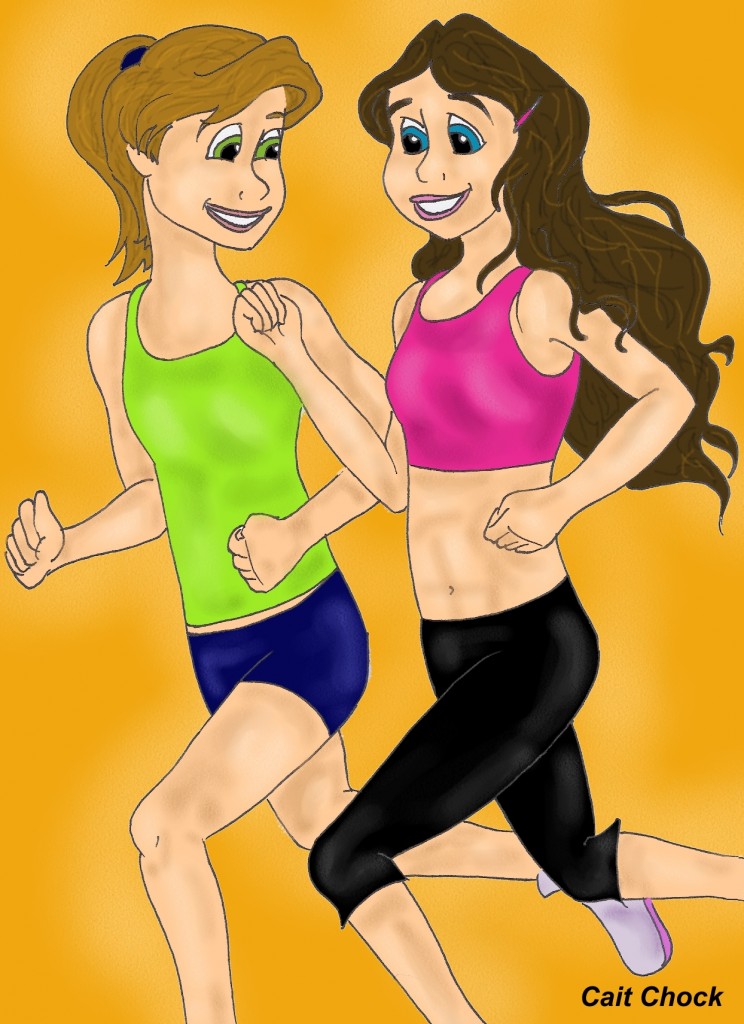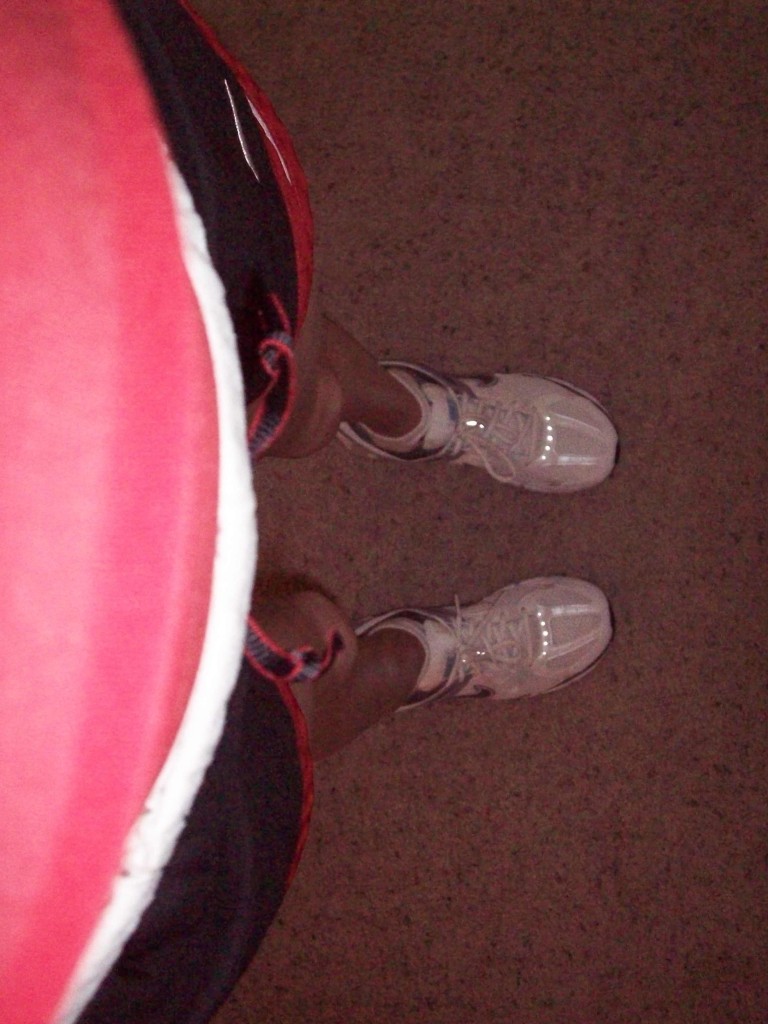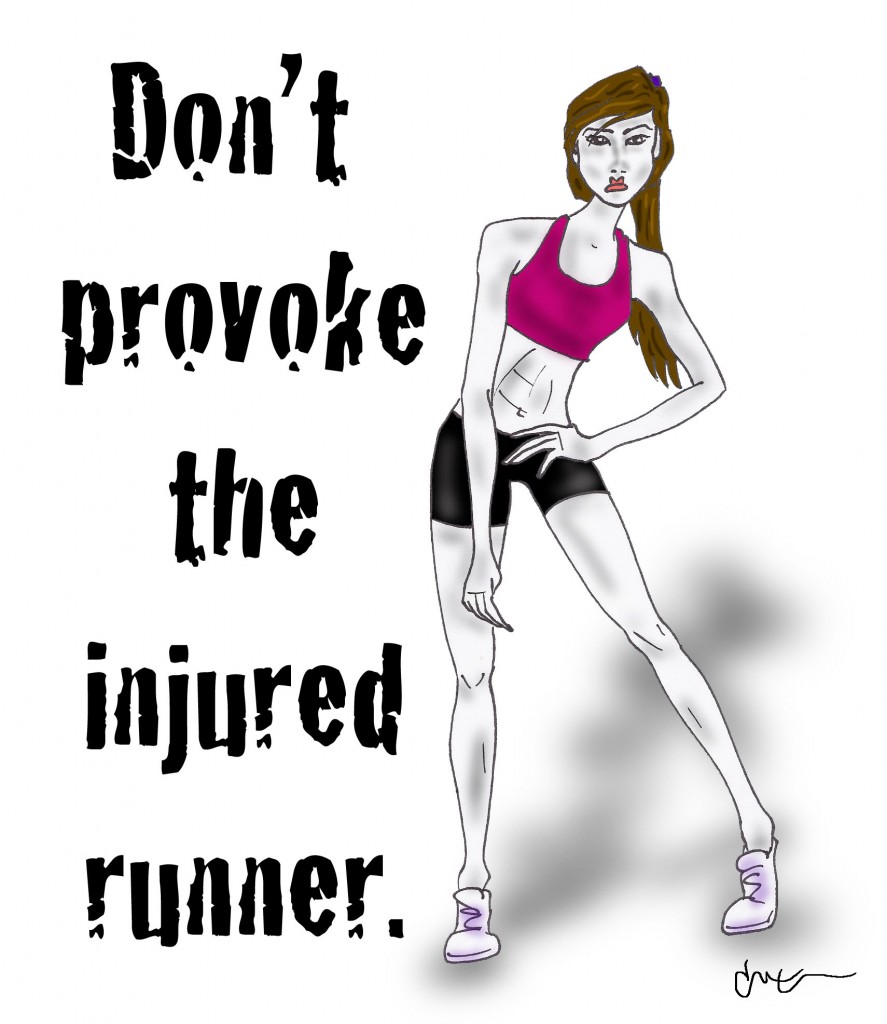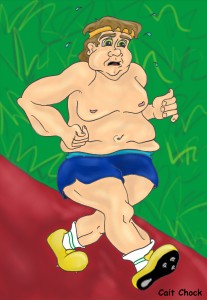Seems like the hot topic of as late is hydration. You can revisit my post earlier in the week about hydration tips for runners and wouldn’t you know that when I popped on over to the Running Times website there was an article just posted about the very same thing. Great minds think alike, maybe? I’ll kid myself into believing that even if it’s not true…hehe.
Their article got really scientific about the whole ‘weigh yourself pre and post-run’ and then take the percentage of sweat lost from your entire body weight and apply that to the amount lost…etc. I sometimes feel that getting too wrapped up in these calculations and conversions may be a little much; certainly more knowledge can be better but at what point is it just over complicating things? In the end the article sums up that even outside of the fanciest tests, scientific equations, lab results and simulations everyone is different and should get to know their body and how they react to certain stressors. Isn’t that pretty much across the board in anything, hydration and training alike?
Athletes, the longer they are at it, become incredibly attuned to subtle nuances that the ‘average person’ probably wouldn’t think twice of. The thing is, when you’re constantly asking your body to perform at it’s best, you can sense those small degrees of deviations from the norm. Feeling 10% off of your best may not mean much if the most physical thing you do all day is stroll around the block, but in the quest for a PR 10% in a HUGE difference. Just some food and drink for thought.
Back to running and hydration, I’m not someone who carries a water bottle with me. I never have and unless I embark on marathon distance-plus training I don’t really plan on doing so. I’m a less is more type of runner and get annoyed if my watch is too big and bulky. Everyone is different and I know my body, I can make it through my runs without needing water or gels…that’s just me.
But there are lots of runners who DO prefer to carry water and gels; there are the fanny-packs, the belts, and other similar contraptions. With today’s tech age I’m seeing runners taking their phones along like they are just as vital as the actual running shoes. Again, I’m a less is more person, but whatever floats your boat. It does make for some more interesting blog trolling as I can see the pictures other people post of them getting all sweaty with it. 🙂
I was contacted by a new company, Clean Bottle, who have come out with ‘The Runner’ and wanted me to share my thoughts on it. Even though I’m not a bottle-toter myself I’ll give my opinion on it to help runners who do carry hydration and other items on their runners.
The Runner Run-Down: Clean Bottle’s ‘The Runner’ is pretty neat in that it’s been able to combine a couple of different things in a smaller package. It’s a handheld water bottle with a mesh strap to hold onto; attached is a clear, pouch where you can slip in your phone or iPod in through a side zipper. There’s also a little cinch strap on the side that can hold some gels or other fuel. So it’s able hold quite a number of items that a fanny-pack would but it’s a lot less bulky.

Source
The Pro’s: Like I said it can hold a lot of things and it secures them safely. There are loops where you could fasten your keys into as well, even a pocket behind the phone/iPod holder to stuff some money or identification. The strap to hold onto while running is tight enough that it’s not slipping around, and as for a water bottle that’s pretty much self-explanatory. It gets the job done. I don’t usually run with a bottle but I do carry one around other places and I’d take this guy along with me just in everyday life.
The Con’s: Personally I just hate holding onto things when I’m running and a filled water bottle could be a pound or two, but I know you drink it down and it gets lighter. It’s also a little tough to manage your watch or Garmin if you’re taking splits or something; hitting a button while still clutching a tote can be a little tricky. Other than that though, I can’t really say anything bad about it. If I did take hydration on my runs I’d think this would be preferable to a fanny-pack just because I really can’t stand those.
The Company: Clean Bottle actually really impressed me on the whole and not just because of their products; I like the start-up stories and this is one of them. As to their Clean moniker there is a strong tie to being eco-friendly, for which all of their items are, and 10% of their sales go to an environmental related charity you can choose from. They are currently on the Kickstarter website and if you’d like to help support their burgeoning business check it out and support.
Clean Bottle also gave me one of ‘The Runner’ bottles to give away to a reader, so if you’d like to score one leave a separate comment for each of the following:
1) Follow Clean Bottle on Facebook or Twitter.
2) Follow me on Facebook or Twitter.
3) Tweet, blog about, or Facebook about the giveaway
4) Visit Clean Bottle’s Kickstarter fund and if you sponsor them leave two comments and get a double entry there.
5) Tell me, do you carry water, gels, your phone, etc on your runs?
Deadline will be next Tuesday! 🙂
Until later, keep on sweating and swigging…water, that is. 😉
![]()











